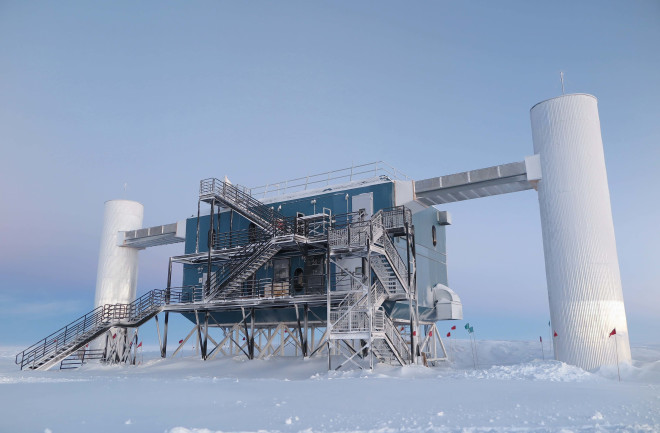This story was originally published in our January/February 2022 issue. Click here to subscribe to read more stories like this one.
In March 2021, after years of analyzing and confirming data, astrophysicists reported that the IceCube Neutrino Observatory, a detector buried at the South Pole, had picked up an unusual signal in 2016. It suggested that a particle called an antineutrino had crossed space and time — originating far beyond our galaxy — before smashing into Antarctica and releasing a particle shower in the ice.
According to the Standard Model of particle physics, every known type of particle has an antimatter counterpart (though there’s hardly any trace of antimatter in the universe today). More than 60 years ago, future Nobel laureate Sheldon Glashow predicted that if an antineutrino — the antimatter answer to the nearly massless neutrino — collided with an electron, it could produce a cascade of other particles. The “Glashow resonance” phenomenon is hard to detect, in large part because the antineutrino needs about 1,000 times more energy than what’s produced in the most powerful colliders on Earth.
But IceCube’s detection is evidence that cosmic accelerators in space could readily propel high-energy particles. “It’s only possible with a natural accelerator, not ground-based accelerators,” says physicist Lu Lu of the University of Wisconsin-Madison, who led the analysis and helped confirm data from the 2016 event. “No one had ever directly observed the resonance before.”
She says the detection is exciting for at least two reasons. First, it confirms predictions by the Standard Model in physics. Second, it shows that by using IceCube, researchers can treat the cosmos as a natural, high-energy laboratory in which to probe new physics. “It opens a new window on neutrino astronomy,” she says.

